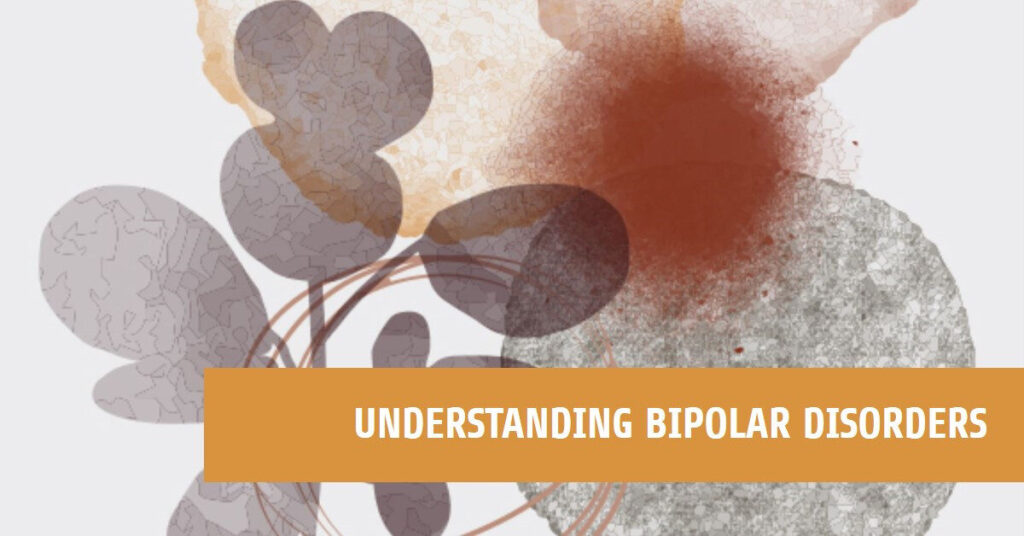Bipolar Disorders: Understanding the Highs and Lows

Bipolar Disorders: Understanding the Highs and Lows Do you know what bipolar disorder really is? Not just the name. Not just the stereotypes. Do you know it is one of the most misunderstood mental health conditions? That it is more than just mood swings? More than highs and lows? Did you know that bipolar disorder affects millions of people globally – every single day? Right now, someone is waking up feeling like the world is at their feet, unstoppable, invincible. Somewhere else, another person struggles to get out of bed, drowning in a darkness they cannot explain. Two extremes, both consuming, both real, and both often met with silence, misunderstanding, and stigma. Did you know that bipolar disorder is not a rare condition? It impacts nearly 1.3 million people in the United Kingdom alone, that is approximately 1 in every 50 people. Globally, the numbers soar into tens of millions. This means that realistically, whether you are aware or not, you already know someone living with bipolar disorder. They could be your friend, a colleague, a family member, or even the person you pass every day in the street. For those living with bipolar disorder, the experience is as diverse as it is profound. It can mean days or weeks of boundless energy, racing thoughts, and an overwhelming sense of invincibility, only to be followed by weeks, or months, of immobilising despair. For some, it’s a delicate balancing act, teetering between these extremes while yearning for a sense of normality that feels forever out of reach. It is a condition that affects not just the individual but their families, friends, and workplaces, creating a ripple effect that touches every aspect of life. Despite its prevalence, the myths and misconceptions persist. Society often paints bipolar disorder in black and white; manic happiness or crippling sadness; but the reality exists in complex shades of grey. It is not just a matter of moodiness or a failure to cope; bipolar disorder is a chronic mental health condition that requires compassion, understanding, and support. Why This Matters Bipolar disorder is more than the swings of mood or energy that society, journalism, and social media often simplifies it into. It is a complex mental health condition, characterised by periods of profound highs – known as mania or hypomania– and devastating lows, often indistinguishable from major depression. For those who live with it, bipolar disorder can be both a relentless storm and a quiet, unyielding weight. Understanding bipolar disorder is not just a “nice-to-know.” It is a “need-to-know.” Misunderstanding breeds stigma, stigma fuels silence, and silence leaves millions without the help, support, and empathy they desperately need. How many people have suffered alone, too afraid to speak up because they fear being labelled “dramatic,” “unreliable,” or “crazy”? How many lives could change if as a society, we stopped to listen, to educate ourselves, and to recognise the truth? This post is not just about understanding bipolar disorder, it is about unearthing the experience behind the diagnosis. It is about bridging the gap between clinical definitions and lived realities, challenging the stigma that perpetuates silence, and offering hope through empathy, education, and action. Whether you are living with bipolar disorder, supporting someone who is, or seeking to learn more, this post aims to provide the depth and insight necessary to truly understand what it means to navigate the highs and lows of this condition. We will explore: What bipolar disorder is; and what it is not. The real-world experience of those navigating its highs and lows. The importance of spotting early warning signs and seeking help. The effect it has on relationships, and workplaces. The role of Mental Health First Aiders and open, stigma-free conversations in creating hope and change. A Call to the Reader By the time you finish this post, I ask you to pause and consider: Do you now understand what bipolar disorder truly is? Can you recognise how deeply it impacts lives; far beyond the headlines and labels? Bipolar disorder is not a character flaw or a failure. It is a medical condition that deserves the same level of understanding, compassion, and treatment as any other health issue (Mental or Physical). I hope you will not only have a clearer picture of bipolar disorder but also the tools and knowledge to make a difference. “The smallest spark of awareness can light the way to change.” Every conversation about mental health brings us closer to a world where understanding replaces judgment and hope replaces despair. What Is Bipolar Disorder? Beyond the Myths and Misconceptions Bipolar disorder is one of the most misunderstood and misrepresented mental health conditions. Often trivialised as mere mood swings or labelled as “dramatic behaviour,” the truth is more complex and deeply rooted in our brain’s chemistry. At its core, bipolar disorder is a mood disorder that affects the brain’s ability to regulate emotions, energy levels, and activity. It is not a fleeting feeling or a choice, it is a medical condition that requires awareness, understanding, and treatment. The Basics of Bipolar Disorder Bipolar disorder is characterised by episodes of mania or hypomania (periods of elevated mood, energy, and activity) and depression (periods of deep sadness, lethargy, and hopelessness). These episodes can last for days, weeks, or even months, and the frequency and intensity vary significantly from person to person. The condition is typically divided into three main types: Bipolar I Disorder: This is defined by at least one manic episode that lasts for seven days or more, or by manic symptoms severe enough to require hospitalisation. Depressive episodes often follow but are not always required for diagnosis. Bipolar II Disorder: This involves a pattern of depressive episodes and hypomanic episodes, which are less severe than full mania. Despite the less intense highs, the depressive episodes can be debilitating. Cyclothymic Disorder: A milder form of bipolar disorder where individuals experience periods of hypomania and mild depression for at least two years. While
